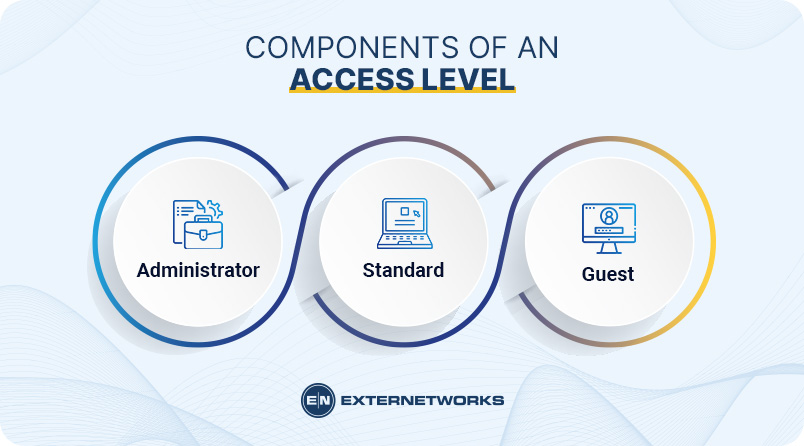Access levels in computer security refer to the permissions granted to users, systems, or applications, dictating their ability to interact with resources such as files, databases, networks, or devices. Effective access control is crucial for maintaining the confidentiality, integrity, and availability of sensitive information. Here, we’ll explore various types of access levels in computer security:
1. Administrator or Superuser Access:
- Description: Also known as root or superuser access, this level provides unrestricted control over a system. Administrators have the highest level of access, allowing them to configure settings, install or uninstall software, and modify system files.
- Use Case: Limited to trusted personnel who need to manage and maintain the overall health and functionality of the system.
2. User Access:
- Description: Regular users have basic access rights, allowing them to perform routine tasks like creating, modifying, and deleting their own files or accessing shared resources based on their permissions.
- Use Case: Applies to individuals who require access to the system for their daily tasks but do not need elevated privileges.
3. Read-Only Access:
- Description: Users with read-only access can view files, documents, or data but cannot modify, delete, or create new content. This access level is often used to share information without the risk of unintentional changes.
- Use Case: Useful for providing information to stakeholders who don’t need to edit or update the data.
4. Write Access:
- Description: Users with write access can create, modify, or delete files and data. This level is more permissive than read-only access but still restricts certain actions, providing a balance between collaboration and security.
- Use Case: Appropriate for individuals or groups collaborating on projects who need to make changes to shared resources.
5. Execute Access:
- Description: Execute access allows users to run applications, scripts, or commands. This level is critical for running programs or processes on a system.
- Use Case: Necessary for users who need to execute specific applications or scripts as part of their job responsibilities.
6. Delete Access:
- Description: Delete access permits users to remove files or data from a system. This level requires careful consideration, as it introduces the potential for data loss.
- Use Case: Given selectively to users who need to manage or clean up files and data but may pose a risk if granted indiscriminately.
7. Modify Access:
- Description: Users with modify access can change the content of files or data without necessarily having the ability to delete them. This level offers a middle ground between read-only and write access.
- Use Case: Suitable for scenarios where users need to make alterations to existing data without the risk of accidental deletion.
8. No Access:
- Description: No access means that a user is explicitly denied permission to a particular resource. This level is essential for restricting access to sensitive or confidential information.
- Use Case: Applied to users who should have no interaction with specific files, directories, or databases due to security or privacy concerns.
9. Role-Based Access Control (RBAC):
- Description: RBAC assigns access rights based on a user’s role within an organization. Users inherit permissions associated with their roles, streamlining access management and reducing complexity.
- Use Case: Particularly useful in large organizations where employees may have different responsibilities, and access needs are based on job roles.
10. Mandatory Access Control (MAC):
- Description: MAC is a security model that restricts access based on security classifications and labels. It’s commonly used in environments where data sensitivity is paramount, such as government or military settings.
- Use Case: Ideal for environments where data must be protected at different classification levels, and access is strictly controlled based on these classifications.
Conclusion:
Access levels in computer security play a pivotal role in maintaining the balance between usability and security. Establishing the right access controls ensures that users have the necessary permissions to perform their tasks without exposing the system to unnecessary risks. Whether it’s granting administrator access for system management or implementing role-based controls for organizational efficiency, a well-defined access control strategy is essential for safeguarding digital assets and preserving the integrity of information systems.

